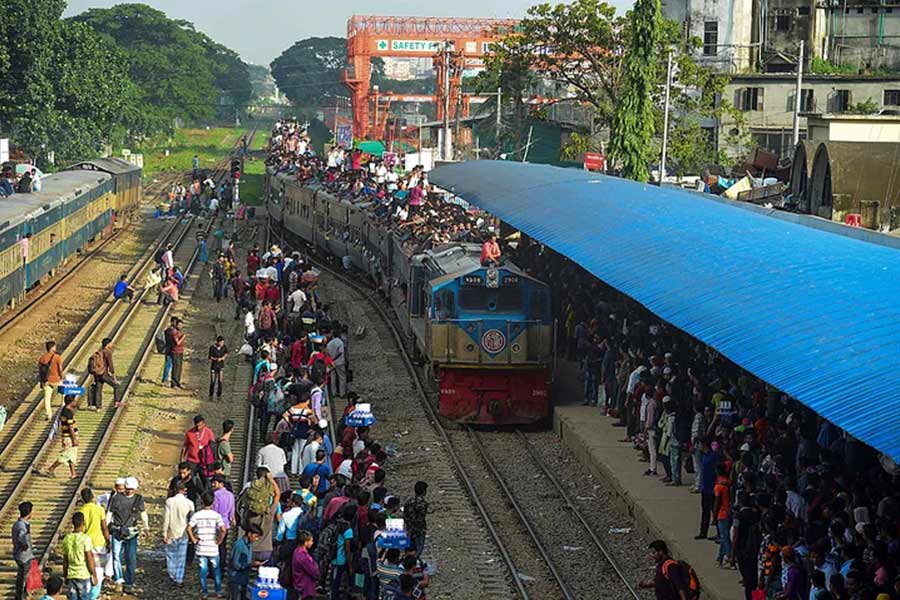
Published :
Updated :

Reverse migration could be a most welcome demographic trend but unfortunately this homecoming from urban settlements is not out of choice but forced. The situation is so dire that more people are now leaving the major cities for their ancestral homes. According to the Bangladesh Sample Vital Statistics published by the Bangladesh Bureau of Statistics (BBS), 13.80 out of every 1,000 people had their compulsive return to villages from cities in 2023. Migration of this order, the study finds, has risen to almost 20 times since 2019.
Conversely, rural-to-urban migration dropped to 19.6 in 2023 from 26.4 per thousand in 2022. This certainly does not paint a happy picture of people's movement. The myth that money flies in Dhaka City may have been dented to a large extent. That people left the city during the lockdown of the pandemic and in the immediate post-pandemic period is quite explainable. But the reverse flow of people that continues still now is the factor that indeed is a cause for concern.
The cause and effect do not at all project a picture of people's resilience against the hostile urban environment. People returning home could not, despite their best of efforts, bring about a turnaround to their fortunes. Those who lost jobs did not land comparable ones during the past four years. Even those who were not sacked or were retained with the same pay package as before, have struggled to keep their body and soul together. Many who could save some money before the pandemic were forced to make ends meet by their meagre savings. When the savings dried up, they also had no option but to leave the city. At least, there is no compulsion for paying the house rent at the beginning of the month in a village.
More people are still struggling to stay in cities. A survey by the South Asian Network on Economic Modeling (SANEM) can throw some light on their struggles. According to its survey conducted in 2023, as many as 70 per cent households have been compelled to change their food habits in favour of either less amount or low quality cheaper foods or even skipping meals. These are the extreme forms of survival tactics.
People who are capable of doing manual work in villages earn a daily wage of Tk500-800 depending on their skills. In villages, there are other options for supplementing income or food requirements. From rearing a milching cow, goats, a few hens or ducks to cultivation of vegetables at the backyard or on the lawn can do the trick. The more enterprising can go for cattle and poultry farms.
Now it needs little elaboration that the cost of living has gone through the roof. Not only has high inflation taken its heavy toll on common people's income --- only more so on the poor, marginalised and low-income of them--- but other expenses like those of house rent, transport and medicare have also seen an atrocious rise. Job market has shrunk and more employees are getting retrenched. The net result of all this is the reverse migration reflecting the stagflation or as coined recently in the US 'shrinkflation' of the Bangladesh economy.
What could signal a positive development for the country has unfortunately gone awry by the twin impact of the pandemic and the Ukraine war. But those two factors are not all. The local trade coteries are desperate to make up for the business slump during the pandemic and post-pandemic periods. They are out to make outrageous profit no matter if the majority of the country's people bleed because of their irrational and manipulative marketing mechanism. At a time food prices in the international market are the lowest in the past two years, the cost of the same shows no sign of relenting here. Evidently, the government has failed to tame business syndicates and thus failed the people.
nilratanhalder2000@yahoo.com


 For all latest news, follow The Financial Express Google News channel.
For all latest news, follow The Financial Express Google News channel.